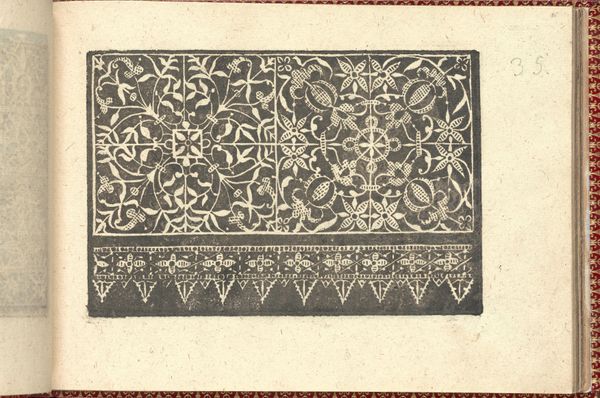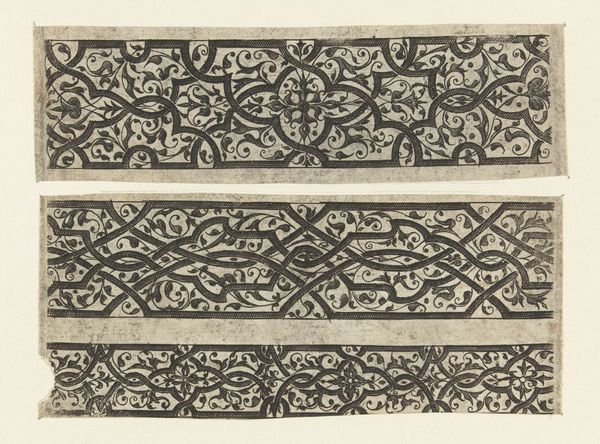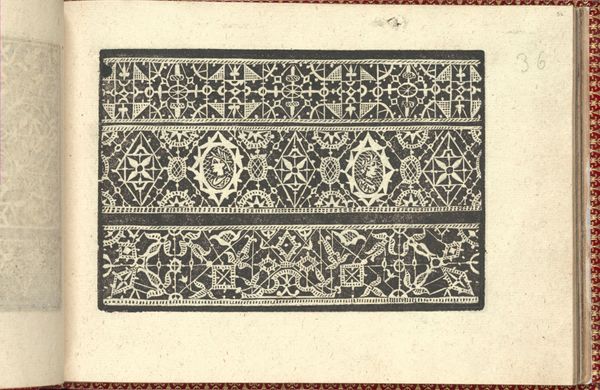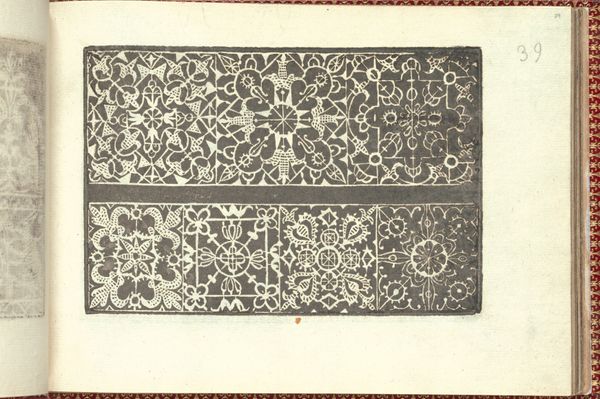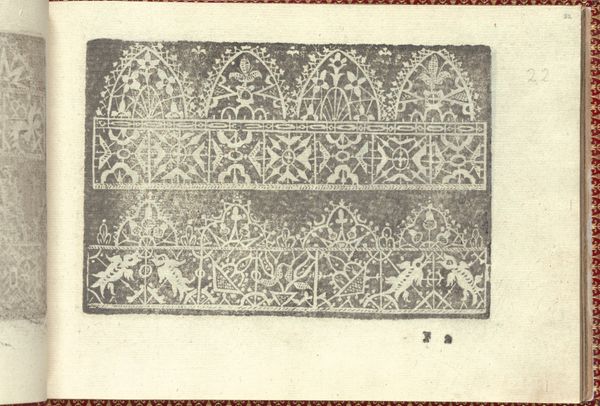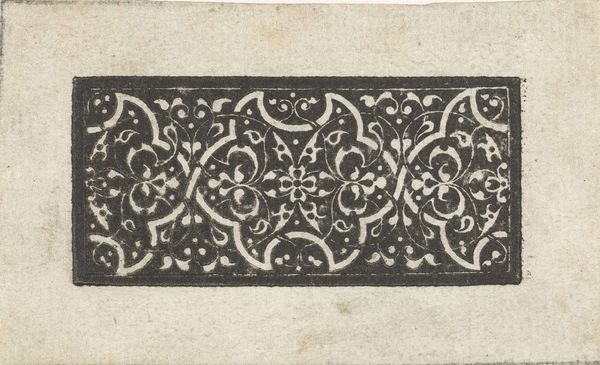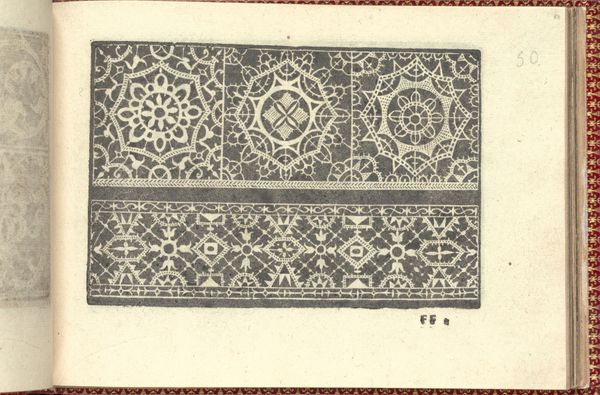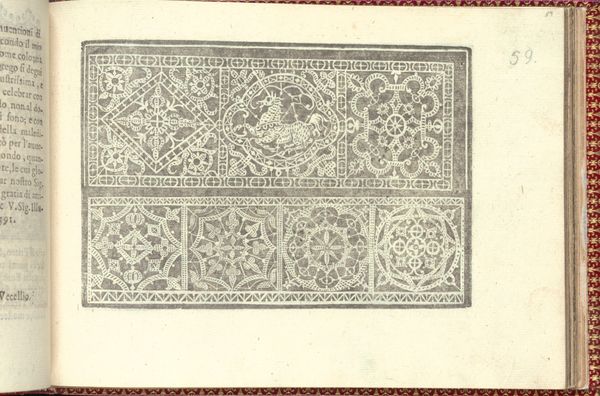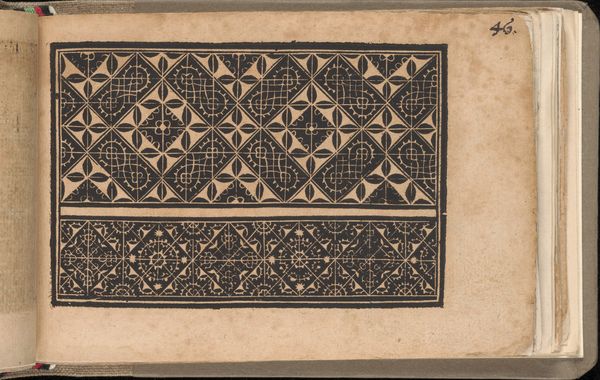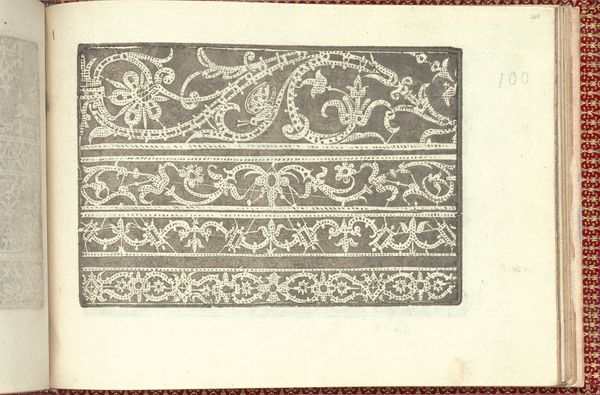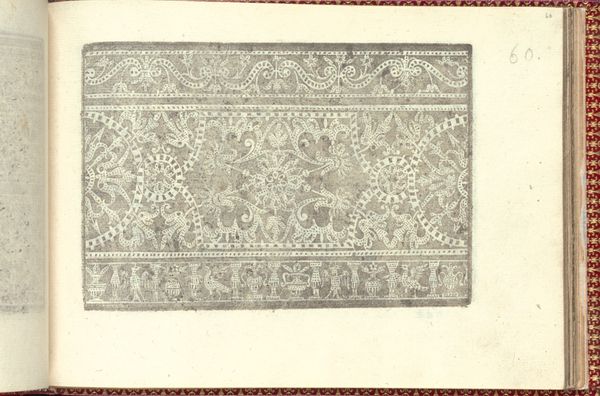
Rechterhelft van een blad met één breed fries en twee smalle friezen 1550 - 1580
0:00
0:00
anonymous
Rijksmuseum
drawing, graphic-art, print, engraving
#
drawing
#
graphic-art
# print
#
11_renaissance
#
geometric
#
engraving
Dimensions: height 79 mm, width 112 mm
Copyright: Rijks Museum: Open Domain
Curator: The precision and detail are striking, aren't they? What are your initial thoughts on this engraving titled "Rechterhelft van een blad met één breed fries en twee smalle friezen", created around 1550-1580 by an anonymous artist? Editor: It's really intricate. The repeating patterns create this mesmerizing effect, almost like fabric. What was the purpose of these kinds of prints? Curator: Think about the broader material culture. Prints like these weren't always conceived as "art" in the modern sense. These "friezes" are actually patterns for use in design—maybe for textiles, furniture, or even architectural details. How does knowing this potentially change your assessment? Editor: That makes total sense! It's like a template. It makes me think about the craftsman who would've used this to decorate something. Did the engraver think of themselves as an artist or more as a tradesman? Curator: An excellent question. In the Renaissance, the line between "artist" and "artisan" was blurry. Engraving involved specialized labor, and the prints were commodities within a larger system of production and consumption. It challenges our notions about originality, authorship, and artistic genius. Editor: So, by looking closely at the materials and how they were used, we understand the role of prints like this one. Fascinating. Curator: Precisely. We shift from viewing it as a singular artistic expression to recognizing its place within a network of making, labor, and commerce. It tells a different story, wouldn't you agree?
Comments
No comments
Be the first to comment and join the conversation on the ultimate creative platform.
